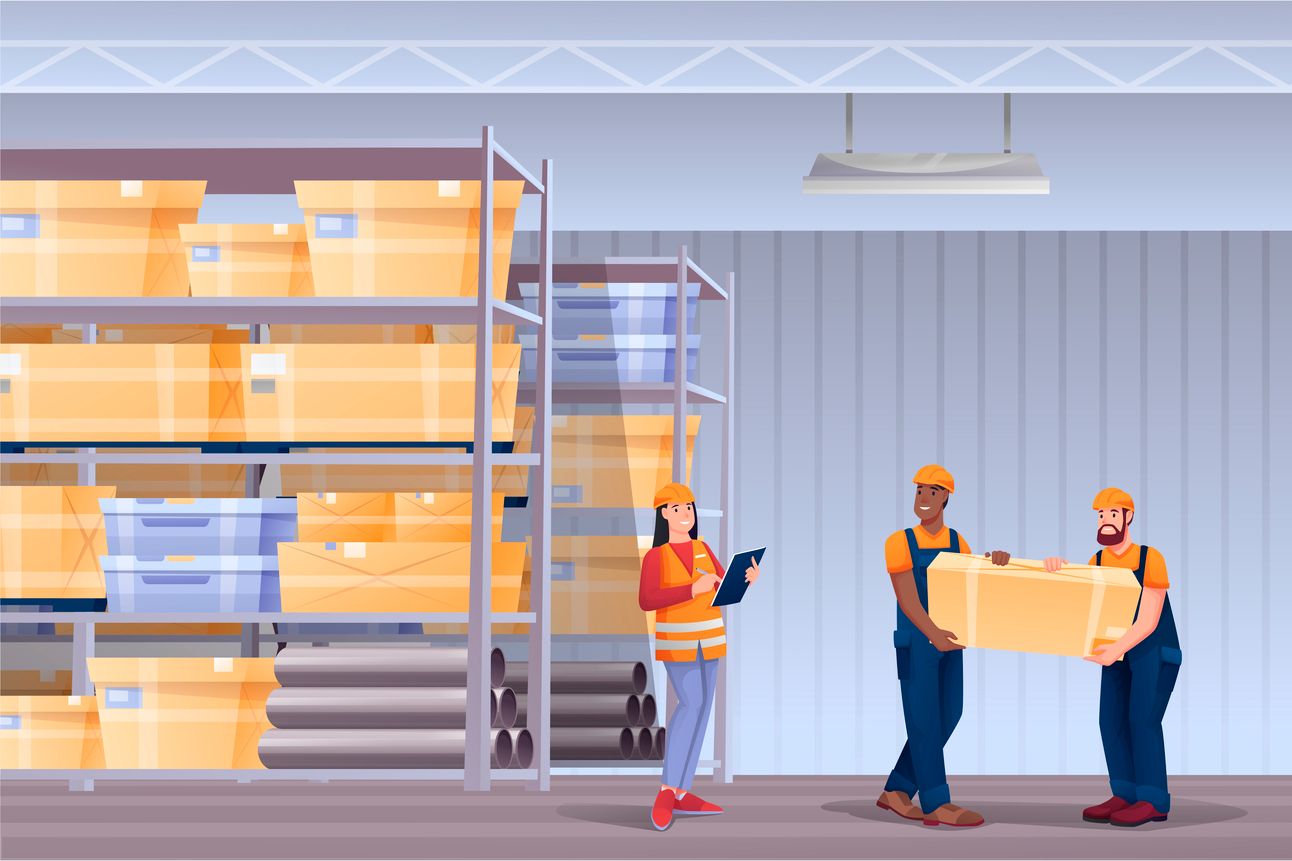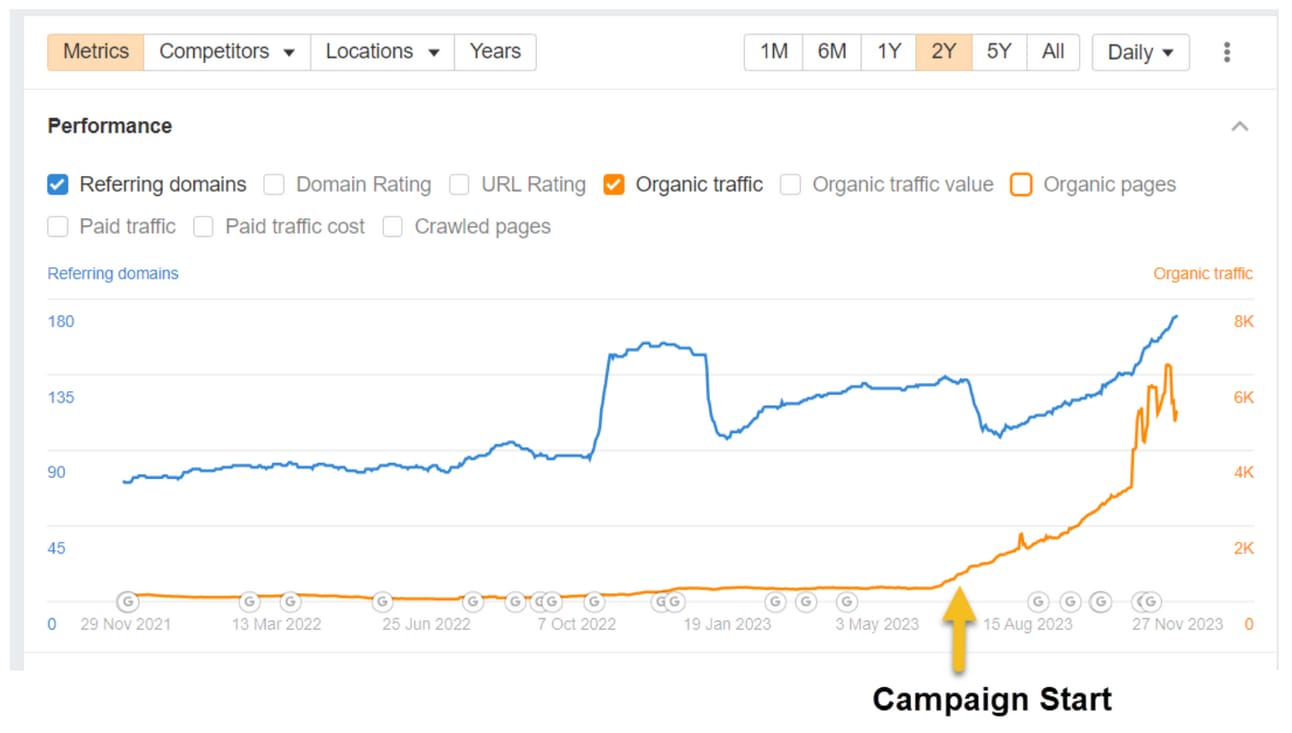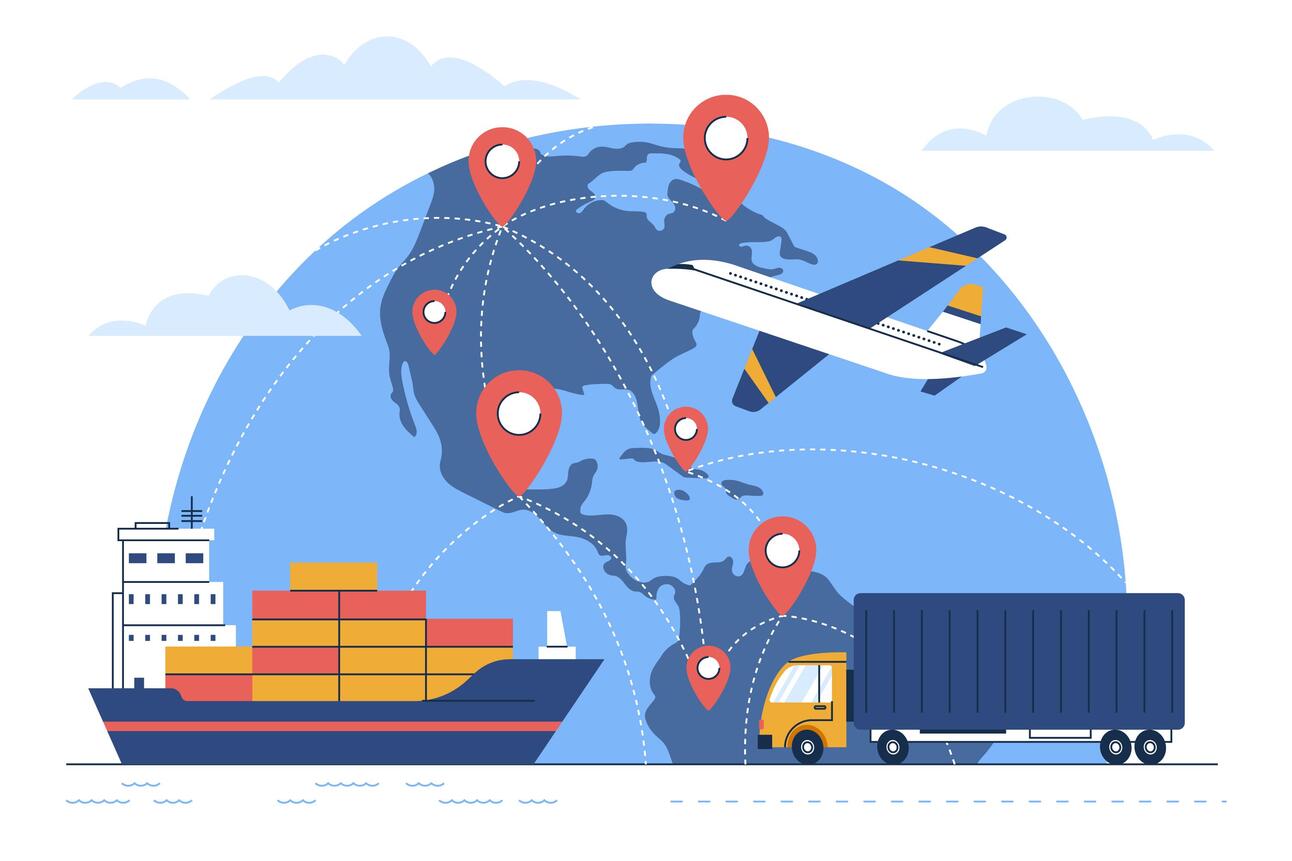- Warehouse Wisdom. Weekly.
- Posts
- Warehouse Wisdom. Weekly. 12/15/2023
Warehouse Wisdom. Weekly. 12/15/2023
Only the most relevant news for SMBs to improve logistics – picked, packed, and delivered without the bias.

Happy Friday!
There’s reason to be cheerful, albeit not quite to the level of last month’s holiday sales. November retail sales were up 0.3% to $705.7 billion, according to the U.S. Department of Commerce. While that’s not record-breaking growth, we will take the gains as they come – since the increases also mark the subsiding of recession fears! Overall, September to November sales increased 3.4% over the same period last year.
But even though we’re ‘slightly’ excited, don’t be completely fooled. While the risk of recession may be low at best, we’re still not out of the woods. Those pesky core goods prices rose by 0.3%, leaving core inflation at a very stubborn 4%, marking the first monthly failure for the rate to decline since March. Looks like we’ve still got some work to do. And work, we’ve done – scouring the Web to report on procrastinating shoppers, TikTok’s plan for global dominance, another decline in warehouse jobs, and more. Without any more delay, let’s jump into this week’s newsletter!
LOGISTICS VITALS
US IS A PROCRASTINATION NATION?

Has the US become a “procrastination nation”? According to the latest Shopify-Gallup Holiday Shopping Pulse survey, December still has a heck of a punch to pack in holiday shopping:
49% of shoppers still plan the bulk of their holiday shopping in December.
21% men versus 11% women intend to do last minute December shopping.
53% of all procrastinators are under the age of 50.
56% of these perpetually late shoppers said they would shop in person rather than online.
Why all the last second madness, you ask? Apparently, consumers need enough money to buy gifts and are waiting for the best possible prices. To win them over, Shopify also had a few key tips: sell digital gift cards, create a gift guide to help these last-minute shoppers decide what to buy, make sure you have adequate stock of the most popular gifts, and offer fast shipping!
ONLINE MARKETPLACES
TIKTOK IS SHOPPING IN INDONESIA

Thank goodness not everyone is a boring procrastinator like us – and if you want to find those exciting trend setters – look no further than to TikTok. After beginning as a platform for time-wasting funny videos, TikTok has grown to be a consumer products giant with millions of people trying on clothes and making product reviews. The company has grown so much that even some of its bigger rivals are beginning to take notice. In fact, on average, the United States TikTok user spends 30 hours a month on TikTok, contrasted to 1.4 hours for Amazon!
But TikTok has its eyes on a much wider universe than the United States – it wants to push its growth to the limit in e-commerce globally. The company has launched operation inside of the U.K. and Asia while utilizing assets that are unique to its e-commerce effort. To everyone’s surprise, a mere two months after e-commerce was banned on social media in Indonesia, TikTok has joined in a partnership with Indonesian e-commerce company Tokopedia, giving TikTok a big stake in one of the biggest e-commerce stores in Indonesia. Shopping features in the TikTok app in Indonesia, which were at once paused, will now be utilized by Tokopedia and TikTok.
And, no, the TikTok news hasn’t ended just yet. The short-form video app’s is becoming a key part of how many consumers, especially those lovely Gen Z females, decide what to buy. Overall, social media platforms contribute to an estimated 5.72% of online retailer’s web traffic, with certain categories like jewelry and apparel seeing upwards of almost 13%. And, you guessed it, TikTok has the most likely bunch of voracious consumers on social media.
TikTok has made a boom in holiday shopping, and it looks as if it will continue for the near future. If you haven’t done so yet, it’s probably high time to cook up some cool and hip videos for new customers to dwindle away those long work hours. And, no, we won’t tell anyone.
WAREHOUSE AND LOGISTICS JOBS
WAREHOUSING IS LOSING MORE JOBS

The logistics labor market just continues to disappoint and bring with it bad news. In the U.S. along, the warehousing industry lost 99,000 jobs over the last month. Rail employment declined 300 jobs, and truck transportation jobs increased a measly 700 over the last month.
And we wish it were just the U.S. labor market that was bringing the mood in the room down, but Canada is bringing its fair share of doom and gloom to the party. According to the Canadian Federation of Independent Business (CFIB), small businesses in Canada missed over $38 billion in revenue opportunities last year because they had to turn down or postpone contracts or sales due to labor shortages.
So how can we turn the tides on all of declines? For starters, a good tune or two might get folks back on the dance floor, especially if they feel appreciated and avoid those pesky workplace injuries. According to a recent Monster survey, 49% of employees leave because of low salaries, and 34% quit because of lack of promotion and career. But the greatest culprit for leaving is that they feel unappreciated. A full 50% claimed they leave because of this “lack of love”. Interestingly, 34% indicated that the left due to feeling burnt out, so that’s something to keep in mind.
And Traveler’s 2023 Injury Impact Report showed that a third (34%) of workplace injuries occurred during an employee’s first year on the job. The most common cause of injury in the workplace is overexertion (29%), followed by slips, trips, and falls (23%). On second thought, maybe we should make sure to keep that disco ball and dancing far removed from the warehouse floor.
SPONSORED BY ONLY OUTREACH
ONLY OUTREACH IS GROWING WEBSITE TRAFFIC THROUGH THE ROOF

What does a successful link building campaign look like?
A domain authority increase from 7 to 33 and a 733.33% boost in monthly traffic in 5 months
A monthly traffic increase by 270% in 7 months
A domain rating increase from 25 to 46 and a traffic increase by 200% in 12 months
A monthly traffic increase by 800% in 5 months
But how do we know for sure about Only Outreach success? Because they’ve helped ALMOST DOUBLE our organic traffic!
By the way, their cost per link is extremely competitive given the high quality of the links delivered!
This is the type of secret we would normally keep to ourselves, but if you’re looking to make big gains in your organic traffic, click the button below & fill out the quote request form - then we will connect you with them. Oh, and this message will self destruct in 10 seconds…
SMALL PARCEL FREIGHT
FEDEX AND UPS ARE HOPING FOR BETTER DAYS

Maybe FedEx and UPS need to watch a few funny TikTok videos as a pick me up, because they both had a bad year in 2023, headlined by higher labor costs and low demand. If you’re the visual type, check out this page for some charts and graphs that capture the essence of the volatile year.
Both carriers faced soft demand throughout the year, as the pandemic-fueled e-commerce boom simmered out. To fix the rough patch, the carriers made moves to reduce their networks and infrastructure and offered up rate discounts to entice new business and causing ground parcel delivery costs to fall YoY. To boot, both companies are hiking their 2024 rates by only 5.9% - lower than in 2023. Just don’t think they’re getting too soft on us – as both companies also raised their diesel fuel surcharge by 100 basis points to 16%.
Although FedEx and UPS are both going through rough patches, company executives have reported improved service levels and better on-time delivery performance, and they are keeping their hopes up that 2024 will be a brighter year. Keeping trustworthy service levels will certainly help FedEx and UPS position themselves for success in the next few years.
INBOUND CONTAINER FREIGHT
IMPORTS ARE UP AGAIN

No better way to end a freight discussion than on a good note, so we’re going to do just that. United States-bound containerized freight imports were up in November, for the third straight month, following a 13-month stretch of annual declines, according to data recently issued by S&P Global Market Intelligence. This looks like a return to what it called a “normal pattern of seasonality”.
And according to results from a recent Container xChange survey, respondents foresee growth in the global container shipping industry in 2024. 53% of respondents expect container prices to increase in the coming year and a healthy percentage of supply chain professionals plan to invest in technology for forecasting and planning, and real-time visibility and tracking. Sounds like a lot of strategic planning is taking place to recognize and avoid potential disruptions in 2024.
GLOBAL SUPPLY CHAINS
SUPPLY CHAINS ARE AVOIDING SHORTAGES

Soft landing are two welcomed words for the global economy, as thoughts of recession are dwindling. But some are still suggesting two other words for the supply chain industry specifically – ‘extreme caution’. According to supply chain leaders at Fortune 500 companies around the world, it’s no time to be running up the expense accounts and throwing lavish parties. Quite the oppositive, in fact, as belt tightening and cash management will reign supreme in 2024. After all, we learned a lot of tough lessons in 2023 with carriers announcing wide layoffs and oftentimes folding, freight brokers failing to eliminate manual process with all the tech at its fingertips, and even freight factoring companies feeling the pinch with shippers implements tougher net-60 or even net-90 payment terms.
But when it comes to inventory supply, have we learned our lesson from the pandemic? Structurally, things haven’t changed, we’ve only seen fewer issues for the most part due to weakened demand. Retailers have not embraced higher inventory levels. Lean inventories are the name of the game, but it leaves very little for any crisis, whether a global military conflict, financial crisis, systemic cyberattack, extreme terrorism, or pandemic. Some economists even believe we’re at risk for another “everything shortage”.
Furthermore, the manufacturing slump is expected to continue into 2024. The GEP Global Supply Chain Volatility Index was once again in negative territory at -0.34 in November, compared to -0.41 in October, indicating an eighth successive month of spare capacity across global supply chains. This means that the end to the global manufacturing recession is still some way off. Weakness in demand for raw materials, components and commodities continued in November. Europe and Asia both saw declines.
So, what’s the cure for all these ailments? While there are a lot of suggestions, supply chain diversification seems to be at the top of most expert’s lists. Whether near-shoring or finding other secondary markets for production, diversifying your suppliers might be a good item to add to your 2024 to do list.
WAREHOUSE QUICK DELIVERIES
LOGISTICS PROFESSIONAL ARE HUNGRY, AND MORE…
Consumers to Spend Less on Groceries and Consumer Packaged Goods in 2024
Amazon Tests Out Unlimited Grocery Delivery for Prime Users
Kroger Cooks Up Recipe Suggestions and Ingredient Ordering on GE Appliances
Consumers are Taking More Time Making Purchase Decisions
West Coast Ports are Headed for Major Congestion in 2024
Etsy Cuts 11 Percent of its Workforce
Dollar General Plans 800 New Stores in 2024
“I think that being that heavily sourced in any place where you have an abundance of supply localized is not a solid strategy for continuity and introduces a ton of risk.”